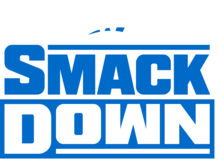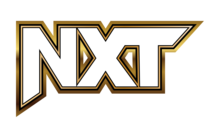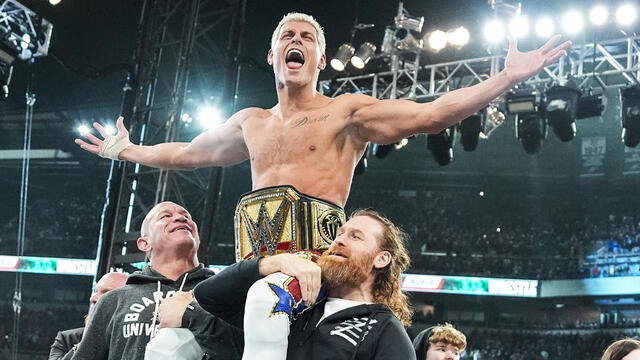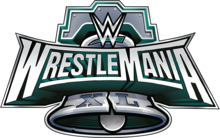
The greatest technical wrestlers ever

What makes a great technical wrestler? Every sports-entertainment diehard thinks they know, but it’s difficult to understand the subtleties of the squared circle when the closest you’ve come to a wrestling ring is that time you scored third row tickets to a Raw live event. So the WWE Classics team did what any doe-eyed WWE neophyte does when they need an answer — we asked William Regal.
"A great technical wrestler is somebody who dedicates his time and energy to learning every nuance of why a hold hurts and how to apply it correctly to get the most benefit out of it,” the British master said. “It’s somebody that is never happy with the knowledge that they have and is always trying to come up with better ways to execute a hold.”
Great. We had our answer. But we weren’t satisfied. Like small children, we had more questions. What made Bret “Hit Man” Hart “The Excellence of Execution”? What allows Daniel Bryan to lay claim to being the best wrestler in the world? We needed to know, so we asked Dean Malenko, Tyson Kidd and every other Superstar in the locker room who could sheepshank our limbs if they didn’t have something better to do. Here’s what we found out.
( WATCH: The greatest technical matches)
William Regal on Daniel Bryan
WWE CLASSICS: Daniel Bryan seems to be this generation’s technical master. What makes him so special?
WILLIAM REGAL: First of all, he had a good mentor in me. And then he went and picked the brains of the best technical wrestlers around the world. He learned from Robbie Brookside and all the best wrestlers in Britain, all the best wrestlers in Japan. Then he took it to a level out of my realm with his jujitsu training and his grappling coach Neil [Melanson]. These are the people who are the best at what they do. He’s taken bits from every single one of us, which makes him better than everybody else.
WWE CLASSICS: Was he a natural from the start?
REGAL: That’s a real thing I have to get off my chest about this — there’s a reason the likes of me and him and Dean Malenko are considered great technical wrestlers. We’re not born with that skill. It’s because we spend more time learning it. We dedicate more of our lives to perfecting it and never stopping.
WWE CLASSICS: How difficult is it to become a master technician?
REGAL: It takes more work than most people are willing to put into it. There are a lot of people trying to do technical wrestling, but they have never actually been taught how to do it correctly. There’s a big difference between being a technical wrestler and doing loads of moves. There’s a hell of a difference.
WWE CLASSICS: So how does a competitor attain technical prowess?
REGAL: You can only learn that stuff by getting taught it, so you need to find somebody who is very skilled at it to teach you the nuances and the real detail of how to be a great technical wrestler. Johnny Saint was one of the great technical wrestlers from England, and all the young American wrestlers copy him, but none of them have actually trained with him. It’s a big difference. I watch them and I go, “Ugh!” It looks so horrible and out of place and they don’t really know what they’re doing.
WWE CLASSICS: Are there any Daniel Bryan matches the WWE Universe should check out to see technical wrestling done right?
REGAL: That incredible match with [CM] Punk at [WWE Over the Limit 2012]. Fantastic stuff. He just set a whole new standard. I hope everybody in WWE is watching.
Tyson Kidd on The Dynamite Kid
WWE CLASSICS: You’ve been compared favorably to The Dynamite Kid. He seems to be one of the few wrestlers who peaked in the ’80s but is still a major part of the conversation today.
TYSON KIDD: Dynamite is so special, because he would mix everything. He would do a bit of brawling, but he would mix technical wrestling and high flying. Growing up watching Stampede Wrestling – every night he was jumping off the top rope at least twice a match. He’d do a big dropkick, he’d do the flying headbutt. A lot of times he’d actually get caught up there and get thrown. I remember in Stampede you’d see him get thrown off the top rope and he’d go across the ring.
WWE CLASSICS: A lot of competitors attempt to emulate his style, but few pull it off. Why is that?
KIDD: He had that snap, that explosion. His snap suplex is so fast — he’s the master of it. I think that’s where the Dynamite in his name comes from. I don’t know if that snap can be taught. Either you have it or you don’t.
WWE CLASSICS: What’s a match that exemplifies The Dynamite Kid at his best?
KIDD: I think the ones with Tiger Mask in Japan stand the test of time more than any matches out there. Those are from the early ’80s and if you watch them you’ll be blown away. This is almost 30 years ago and these guys were going out there and doing stuff that guys today can’t even really emulate.
WWE CLASSICS: Any other bouts that stand out in your mind?
KIDD: Obviously, the match between The Bulldogs and The Dream Team [at WrestleMania 2]. If you go back and watch Dave Boy [Smith] against Dynamite in Japan, they had insane matches. There’s Dynamite and Bret [Hart] in Stampede Wrestling. Dynamite and Macho Man had a match at The Wrestling Classic [in 1985] that was crazy. ( WATCH) I can sit here and list a million more matches. He’s just a genius, an absolute genius.
Billy Kidman on Dean Malenko
WWE CLASSICS: In your opinion, what makes a great ring technician?
BILLY KIDMAN: Definitely being able to work any style, but especially a mat-based style — a good ground technique, a lot of holds, a lot of counters. To be able to put all that together really makes a technician what they are.
WWE CLASSICS: One of the great ring technicians is Dean Malenko. You work with him as a producer for WWE today and have known him for a long time. Why do you think he's so respected?
KIDMAN: The funny thing is, as soon as you asked about ring technicians, the first name that popped into my head was Dean Malenko. He was called The Man of 1,000 Holds for a reason. Dean had a hold for everything, a counter for everything and a counter for the counter of the hold.
WWE CLASSICS: Did that alone separate Dean Malenko from his peers?
KIDMAN: For a lot of wrestlers, it’s hard for them to remember a single counter or a single technique, so to be able to apply all the different holds and their counters is what makes him special.
WWE CLASSICS: If you could pick one Dean Malenko match that stands out and shows off his skill, what would that be?
KIDMAN: Wow, I don’t know the timeline, but it would probably be Dean versus Eddie Guerrero. ( WATCH) I don’t know if it would be their ECW stuff, but definitely Dean versus Eddie or a Dean versus Rey Mysterio match. ( WATCH) Those would be two really good ones to watch.
Natalya on Bret Hart
WWE CLASSICS: The Hart name has become synonymous with technical wrestling. What made your uncle, Bret “Hit Man” Hart, “The Excellence of Execution?”
NATALYA: Well he was very well-rounded. He wasn’t a high-flyer, but there was really nothing that he couldn’t do. It didn’t matter if it was The 1-2-3 Kid or if it was The British Bulldog or if it was Doink the Clown, he always made it into something really special.
WWE CLASSICS: The "Hit Man" also had a personality that a lot of the great technicians lack.
NATALYA: Being from the Hart family, you’re very dramatic naturally. I think that’s what makes his technical work so entertaining because if you watch an amateur wrestling match, it can be boring. But Bret put a story into his art and his art was submission wrestling. I think that really defined him among others that were very technical, but didn’t have the flair for the theatrics that Bret did.
WWE CLASSICS: You grew up watching Bret compete. What matches have stayed with you over the years?
NATALYA: There are three matches of his that I love — his one with Owen at WrestleMania X, ( WATCH) his WWE Iron Man Match with Shawn [Michaels from WrestleMania XII] and Bret’s [SummerSlam 1992] match with Davey [Boy Smith] at Wembley Stadium. ( WATCH)
WWE CLASSICS: Those seem to be the bouts that define the "Hit Man." Why do you think they stand the test of time?
NATALYA: Bret and Owen put on a clinic. It was so passionate with the two brothers. That is one of my all-time favorites. Then you look at his WWE Iron Man Match with Shawn — who wants to watch a wrestling match for an hour? Well those two made you want to watch longer than an hour. Bret’s technical style really complemented Shawn’s high-flying style. It was such a masterpiece. And Bret’s match with Davey, to me, was such a special match.
WWE CLASSICS: Bret is one of those Superstars who could have a good match with anyone, isn’t he?
NATALYA: Look at Shawn, Owen and Davey: Those three guys have totally different styles, but Bret was the constant. He was the one with the mind. He was our Picasso in the ring. Bret is one of the greatest wrestlers of our time and his work speaks for itself.
Daniel Bryan on William Regal
WWE CLASSICS: What makes a great technical wrestler?
DANIEL BRYAN: A great technical wrestler is somebody who can hurt people through the scientific application of wrestling, as opposed to someone like Mark Henry who just uses blunt strength.
WWE CLASSICS: Who are some of the great technical wrestlers who can hurt people?
BRYAN: Dean Malenko could hurt you with a wristlock. That is the difference between a brawler and a technical wrestler.
WWE CLASSICS: One technical wrestler you certainly learned a lot from is William Regal. What makes him such a great ring technician?
BRYAN: William Regal could hurt you in so many different ways. He would apply joint locks, and then also put an elbow in the joint to make it hurt even more. He was so good at the grinding part of technical wrestling and using leverage to really hurt people.
WWE CLASSICS: Are there any great William Regal matches that stick out in your mind?
BRYAN: He had some amazing matches in Japan with Shinya Hashimoto and Keiji Mutoh, but Regal also had an incredible series of matches with Finlay. Those were two guys who could really wrestle, getting down to the nitty-gritty.
( WATCH: DANIEL BRYAN VS. WILLIAM REGAL)
Michael McGillicutty on Mr. Perfect
WWE CLASSICS: How good was your father?
MICHAEL McGILLICUTTY: In my opinion, not only is he the best technical wrestler of all time, but he’s the best all-around wrestler. He was the most natural athlete.
WWE CLASSICS: Where did those talents come from?
McGILLICUTTY: He had a successful amateur wrestling career at the University of Minnesota, which helped. Also, you may not know this, but my grandfather [former pro Larry “The Ax” Hennig] was an NCAA Heavyweight Champion from the University of Minnesota. My father learned those technical skills at an early age.
WWE CLASSICS: Do any of your father’s matches stand out in your mind?
McGILLICUTTY: Look at anything from WCW, matches with Dean Malenko, Ric Flair. ( WATCH)
WWE CLASSICS: What about from his WWE days?
McGILLICUTTY: Definitely his matches in WWE with Bret Hart. ( WATCH) There are countless matches against him that prove my point that my father is the best technical wrestler of all time.
Dean Malenko on Eddie Guerrero
WWE CLASSICS: Dean Malenko, you know a little bit about technical wrestling. More than a little bit. A great deal, actually. What makes a wrestler very technically sound?
DEAN MALENKO: I think what makes somebody a great technical wrestler is diversity — that’s diversifying moves, counter holds and studying your opponent.
WWE CLASSICS: What does studying an opponent entail?
MALENKO: Wrestling is human chess at its finest. It’s knowing how to out-think your opponent from one move to the next, anticipating what your opponent is going to do and coming up with a game plan for anybody that you step in the ring with. That means knowing that any move you do could be countered, and how to re-counter that move to get back on the offensive.
WWE CLASSICS: How do you achieve that kind of proficiency in the ring?
MALENKO: Studying your opponent is really key — studying his strengths and weaknesses, attacking his weaknesses and staying away from his strengths. That’s what makes a good technical wrestler.
WWE CLASSICS: A lot of sports-entertainment fans remember the great matches between yourself and Eddie Guerrero. What made Eddie such a great technical wrestler?
MALENKO: Eddie was very well-rounded. He was not only a high-flyer, but he knew how to technically wrestle and had some amateur background. Eddie was extremely talented, could change moves in mid-stream and could face so many diverse sizes.
WWE CLASSICS: How did Eddie’s lucha libre and technical background help him in the ring?
MALENKO: From getting in the ring with a high-flyer from Mexico and then turning around and getting in the ring with somebody like myself, who is more of a mat wrestler, he was able to change on a dime. Eddie knew so many different aspects of the business. He was very efficient in learning all the different wrestling styles and mastered them all. With all of that versatility, he was a very dangerous opponent.
WWE CLASSICS: Looking back, what would you say is Eddie Guerrero’s masterpiece – one match that exemplified everything he did?
MALENKO: I’d have to be a little stubborn in that and say it was against me. We worked extremely well together. We always used to laugh and kid that our chemistry was impeccable. ( WATCH)
WWE CLASSICS: Do you remember the first time you met in the ring?
MALENKO: The first time we ever faced each other was the semi-finals of the 1993 Top of the Super Juniors Tournament in Japan. We already knew of each other through our dads, who were both in the business. We clicked really well and brought out the best in each other.
Matt Striker on Bob Backlund
WWE CLASSICS: The key to a lot of Bob Backlund’s success as a technical wrestler was his Crossface Chicken Wing. What made that maneuver so effective?
MATT STRIKER: Go ahead and try to scratch your own back between your shoulder blades. That hurts and it’s hard to do. Imagine now a man is wrenching on your arm and — if that’s not enough — he’s dragging his forearm right across your nose, so it’s twofold in pain. It’s a submission maneuver that there is very little defense against. I believe that’s why Bob Backlund chose to use it.
WWE CLASSICS: Backlund doesn't seem to get the credit he deserves today.
STRIKER: People mocked Bob Backlund. They called him "Howdy Doody," but Bob Backlund epitomized the word wrestler. There was no flash, no fanfare, no pyrotechnics, no loud music. If you go back and look, Bob Backlund was John Cena before John Cena.
WWE CLASSICS: Was it Backlund's technical abilities that allowed him to stay on top for so long?
STRIKER: Bob Backlund also epitomized what it meant to a champion in WWE because Vince McMahon, Sr. knew that if anyone ever came in from outside the territory, that Bob Backlund would be able to tie them in knots if he had the opportunity. Back during the ’70s and ’80s, you needed to know your champion could beat a wrestler no matter what, and that’s one of the main reasons why Bob Backlund earned the championship. For me, that’s why I think he should be included on this list of technical athletes.
WWE Shows Latest Results
Raw results, April 15, 2024: Chad Gable viciously attacks Sami Zayn after losing to Zayn in Intercontinental Title Match!
Full ResultsSmackDown results, April 12, 2024: LA Knight and AJ Styles earn victories for a chance to challenge Cody Rhodes at WWE Backlash!
Full ResultsWWE NXT results, April 9, 2024: Carmelo Hayes wants Trick Williams in a Steel Cage Match
Full Results















